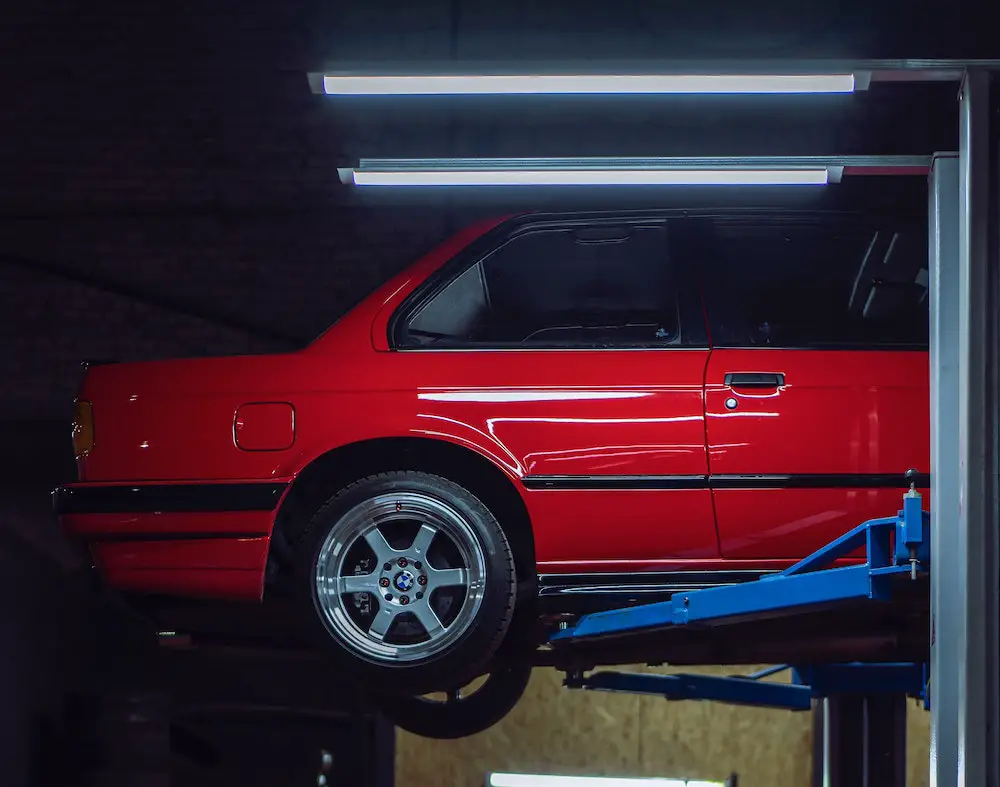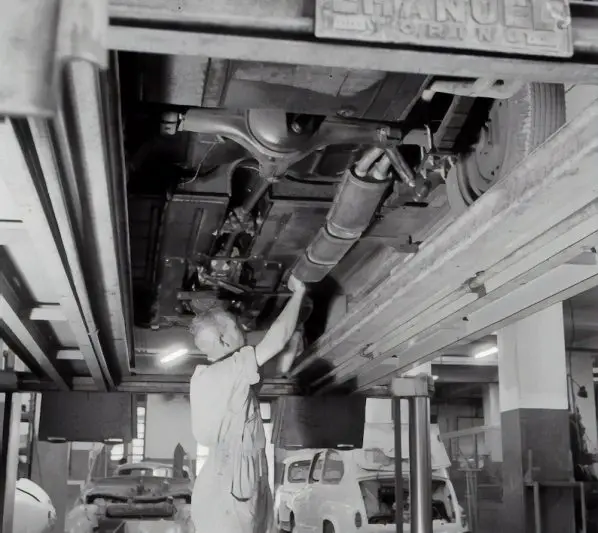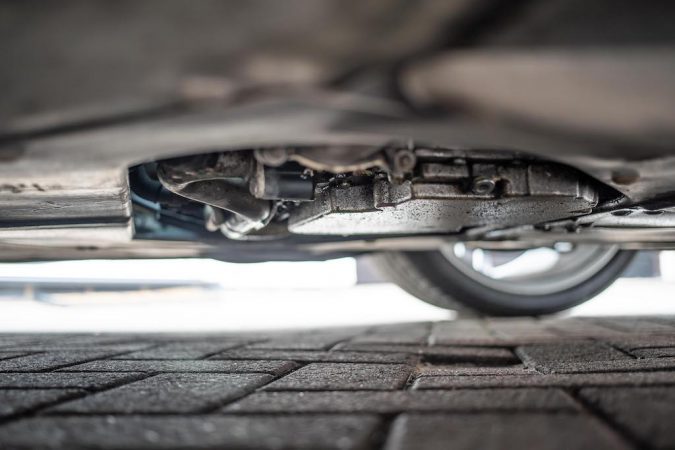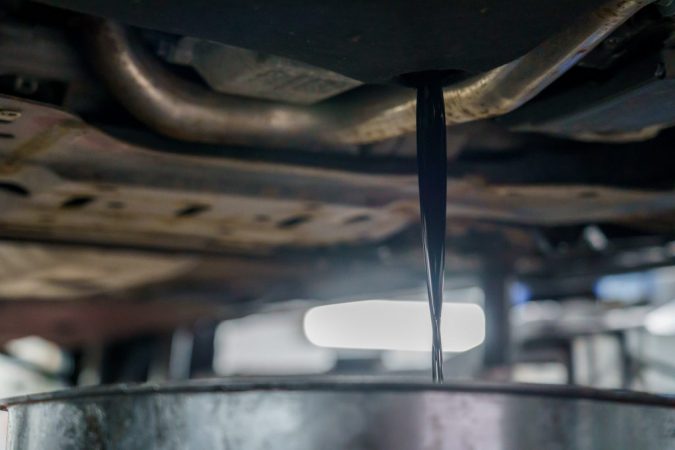If you noticed some leaks coming from the back of your vehicle, then you probably have a rear differential leak. In this case, rear differential repairs have to be carried out to bring your car back to its best working condition.
- What Is A Differential?
- Types Of Differentials
- Common Problems
- Changing Fluid DIY
- Repair Cost
- Conclusion
It’s the same as other components in our cars. The rear differentials are showing their weaknesses after many miles of use. These hardworking components are undertaking a lot of effort to keep your car on the road.
Sooner or later, they are going to give up and show their wear and tear. This is why you need to service them regularly and repair the components that wear off with time.
Replacing these components will extend the life of your differential and make it bulletproof. You just need to find a mechanic who knows how to service these differentials. Plus, you also should know the common issues that occur on cars that have a rear differential.
That’s why in this article, we are going to cover everything you need to know about differentials. We are going to start from the basics. Then, we will explain what is the differential and what its purpose is. Later, we are going to cover the types of differentials and the type of fluid these differentials use.
We will also cover the common problems that occur and how you can tackle them. In the end, we are going to explain how you can change your differential fluid. And we will reveal the cost to replace your differential. So, let’s begin.
What Is A Differential?
The differential is a device that is mounted on the rear axle. Or, it could also be placed along the front axle if you have a front-wheel-drive car. The differential plays a role in delivering the energy from the engine to the wheels.
This means that the differential is not spinning both wheels at the same time. If the differential spins both wheels at the same time, the car will not be able to handle corners or turn at all.
That’s why there are gears that decide how much power each wheel will get to make the turn. In other words, this means that the differential allows the outer wheel to rotate a lot faster than the inner wheel while making a turn.
The gears that are inside of the differential are pretty hefty and they can withstand a lot of stress. But every differential has a limit. If that limit is surpassed, your differential is going to break into pieces.
That’s why you should follow the factory-recommended specifications and you should not overload the vehicle.
A differential can also break if you give it too much torque. For example, in racing applications, the engines are extremely modified. But when they run at the same differential that the stock engine did, the differential cannot withstand these new high torque numbers and it fails.
Also, a proper service on the differential is needed to prevent leaks and other rear differential repairs. That is something that we are going to cover later. But first, let’s see the types of differentials.
Types Of Differentials
Although the differential from the outside looks the same. On the inside, things are laid out differently and there are a couple of types of rear differentials. We are going to cover all of them in this chapter. Some of the most widely used differentials in the automotive industry are the open differential, locked differential, and a limited-slip differential.
Open Differential
The open differential is one of the most common differential designs that are used today. This differential has basic core gears, and its goal is to deliver better cornering ability to the vehicle.
As we mentioned above, the base function of the open differential is to allow the wheel that is on the outside to turn at a greater speed than the wheel that is on the inside, to cover more ground.
This design is also extremely cheap to produce and is a very affordable solution for many carmakers.
The downside of the open differential is that the amount of power that can be transmitted on the rear wheels is limited. This limitation is caused by the wheel that has the lowest grip.
And once the traction limit is reached, the wheel that has the lowest amount of grip will start spinning and the vehicle will lose traction.
Locked Differential
The locked differential is widely used in off-road vehicles that need a lot of traction to overcome obstacles. This differential, at its core, is technically an open differential. However, it has the ability to lock and create a fixed axle. All this is achieved by the input of the driver of the vehicle.
One of the benefits of this type of differential is to improve the traction ability of the vehicle. That’s when compared to an open differential.
One of the disadvantages that these locked differentials have is binding. The binding is a situation when a lot of torque is built up inside of the drivetrain and this energy has to be released. This problem is usually solved by the wheels leaving the ground to reset the position. Or, by the driver when he simply releases the locks when this locked differential is not needed.
Welded Locked Differential
This is another type of differential that is popular among the car community. That would be the ability to weld the rear differential.
Many muscle car guys are welding the rear open differential and convert it into a locked differential. This is the case when the differential gets locked. This way, the car can spin both of the tires when the car loses traction.
This spin allows you to enjoy burnouts. That’s why many people in the car community are doing this sort of modification to their cars.
The process of locking the differential is simple. The gears are locked by welding them together and they become one axle.
There are a lot of downsides to this practice. It is not safe at all, mostly for the driver. The car losses the capability of cornering well, and it becomes very unstable in the corners. If the speed is too high, it can easily lose traction and get you involved in an accident.
Another reason why you shouldn’t weld the differential is that you are also putting other people in danger. Mainly, these would be pedestrians and your friends and family that you are driving in the car.
That’s why welding the differential is not recommended and is considered to be an unsafe practice.
Limited Slip Differential
A limited-slip differential is a newer technology that combines both the locked differential and the open differential. This differential delivers the best performance and is very popular in high-performance applications.
There are two types of limited-slip differentials. These are the mechanical clutch limited-slip differential and the viscous limited-slip differential.
The mechanical clutch differential is using clutch plates to maintain the level of grip when needed and to lock the differential.
Meanwhile, the viscous limited-slip differential is using a special thick fluid to create resistance and change the behavior of the differential.
The viscous limited-slip differential is much simpler and cheaper to make since there are no clutch plates. This is why you should opt for a car that has a viscous limited-slip differential. All of it is to make the rear differential repair easier.
Differential Fluid
When performing the rear differential repairs. Replacing the fluid is one of the key goals that you should have. But what kind of fluid does the rear differential use?
The differential fluid is golden yellow in color and is quite different from the regular oil. Namely, this is because of its viscosity. The gear oil used in the differential is quite thick. The fluid is thick to help the differential deliver the right amount of torque to the wheels.
Also, this fluid is extremely durable and can withstand a lot of beating. A differential can go for more than 100,000 miles without servicing and replacing the fluid. Although, this will vary from car to car. Most technicians recommend a check-up every 30,000 to 60,000 miles.
But when the differential gets opened up, the fluid will look terrible. The color changes from yellow golden into a color that doesn’t look as good as it should be. Also, the smell of this fluid is unbearable and that’s why many people hate differential fluid changes.
However, you should definitely keep the health of the differential in check. That aforementioned interval of 30,000 to 60,000 miles is a good sweet spot for a differential fluid change. This way, you never have to worry about rear differential repairs. That said, rear differential repairs can pop up now and then, and in the next chapter, we are going to cover the common rear differential repairs.
Common Differential Problems
Like with every component on the vehicle so is the rear differential prone to some failures. It’s important to know what are the most common issues that occur with the rear differential. This is good to know for you to have a better perspective of what you should expect from your rear differential and how to tackle this issue. So, without further ado let’s dive into the problems.
Differential Gasket Leak
The differential gasket is prone to develop leaks because the differential fluid is exposed to high temperatures. When the differential does not have the proper cooling, the temperatures rise. These high temperatures are going to damage the gasket material and cause leaks.
Replacing the gasket is an easy job and does not require a lot of effort. You will only need a lift, a new gasket, and new gear oil for the differential.
Replacing the gasket is a straightforward job and it only requires unbolting all of the bolts that are holding the pan and releasing the fluid. Then, you need to scrape the material and clean the surface. After cleaning the surface, you bolt the pan with the new gasket and tighten up the differential. With that done, you are good to go.
Fixing Leaks From The Side Of The Differential
On all three sides of the differential, there are seals. And over time these seals go bad and start to develop cracks and these cracks allow the gear oil to escape.
When these seals start to leak, you are going to notice how the oil is spreading on each side of the differential assembly. Or, if the front seal starts leaking, you will notice fluid on the yoke.
When there are leaks, it is important to act quickly and have these things patched on time. This is before they develop into something worse and leave your differential without fluid.
If most of the fluid in your differential escapes, the differential will be left dry and will eventually overheat. This will cause many issues with the differential, and you will have to replace some of the gears that were damaged. If not, you have to replace all the gears. That’s why it is crucial to follow the condition of the differential and make sure that there is always fluid inside of it.
Differential Bearing Replacement
The differential also has bearings that make it deliver proper movement without any issues whatsoever. Over time, these bearings get damaged and when the bearing is damaged, it can cause the gears not to rotate properly and also cause leaks to develop.
So, when you are seeing a leak coming from the seals, you can bet that the bearings inside are worn as well. That’s why these components are replaced altogether.
Generally, replacing them is not that expensive. These are the rear differential repairs that have to be done to extend the differential’s life.
Replacing Differential Gears
If there is damage inside of the differential it may require a replacement of the gears. This will depend on the damage that was caused to them.
In some of the cases, you will have to replace the whole differential. But if the damage is repairable, you can expect to get new gears that will make the differential work properly.
Replacing the gears can be pricey and you will have to pay a lot to get it fixed. Although if it’s a truck or a car that is an older model, you can get one from your local junkyard. Differentials usually don’t get damaged a lot and you are for sure are going to find one in good condition that will last for a long time.
That’s why I strongly encourage this than repairing an old differential. It’s cheaper in most cases, and you will get a better unit than you already have. On top of that, you can worry less about rear differential repairs in the future.
Differential Fluid Change DIY
If it’s time to change your differential fluid, this is the chapter that you’ve been waiting for. We are going to learn how to properly do rear differential repairs in a DIY fashion.
It is essential for this fluid to be replaced every 30,000 to 60,000 miles. Although, some cars have differentials that require fluid changes only after 100,000 miles or more. Still, you can’t delay the replacement of the fluid any longer, regardless. So, how you can perform these rear differential repairs?
To service your differential, you are going to need a lift, a new differential gasket, a bucket, a wrench, and a new differential fluid. If you don’t have the lift, it can be difficult but not impossible to replace the fluid. You can use jack stands. But make sure that the car is properly secured and will not roll.
Step 1
The first thing you need to do is lift the car in the air, and inspect the condition of the differential. If there are leaks from the gasket, then it’s good, because we are going to replace it.
Step 2
Now it’s time to get a big bucket and place it under the differential. This is necessary because the differential does not have a drain plug, so replacing the fluid is going to be extremely messy. That’s why a big bucket will do the trick.
Step 3
Slowly start to loosen up the bolts that are around the oil pan and collect the fluid in a big bucket. Make sure that all the fluid leaks out. This is important because you want all of the old fluid out of the differential.
Step 4
Now, you can scrape the gasket material that is around the pan and on the differential as well. Make sure that you remove the old gasket and the surface is nice and clean. This will guarantee a proper seal of the new gasket.
Step 5
After you have cleaned the gasket material, it’s now time to apply the new gasket in place and make sure that you get it right and all the holes match. After this, you can add the pan and start torquing the bolts around the pan.
Step 6
After you torqued the bolts around the pan, now it’s time to refill the differential with new fluid. On the side of the differential, there is a plug. You have to remove this plug and get a hose. Then you need to put the hose inside of the differential and start pouring some fluid.
You need to pour fluid until it starts leaking from the side of the differential. Once the first drops start to pour from the side, you know that you have to stop adding new fluid. Then, torque the filling bolt and you are good to go.
You’ve just serviced your differential successfully and your differential is ready to go for tens of thousands more miles with no issues. Replacing the fluid sooner rather than later is a good idea to keep the differential safe.
Cost To Perform Rear Differential Repairs
The cost to perform rear differential repairs depends much on what needs repairing. Not all repairs cost the same, and some of them are very expensive while some of them are pretty affordable.
The price mostly depends on the shop that is doing the repairs. If you want to get a cheaper deal, you have to go to a cheaper shop. That’s why some research is an excellent idea before you decide on performing rear differential repairs.
The cheapest service to do is to replace the gear oil that is in the differential and this can cost around $150. This is relatively cheap. Then, we have the bearings and seals, where each of them can cost between $200 to $400 to replace. The driveshaft bearing is usually a more expensive repair since you will have to remove the driveshaft.
Then comes the gear replacement. The gear replacement is one of the more expensive repairs and can cost more than $1500. Or, if you find a used differential, you can swap the whole thing for around $2000 which is a good deal, in my opinion.
Replacing the differential, as we said if you opt for a used one you can expect to pay around $2000 for the part. Or, if you opt for a new one you can expect to pay a lot. New differentials for some cars can cost $4000 which is crazy.
But it is what it is, and you have to do the job to keep the car on the road. That is the most important thing. Or, if you think that the repairs are worth more than the value of the car, you can just get a new car and sell the one with a bad differential.
Car Differential Facts: What Causes It to Go Bad and Bad Differential Symptoms
- A car’s differential keeps the front and rear wheels on the same page, ensuring the right amount of power is given to each set for movement in the right direction.
- Over-stressing a new car by driving too fast or towing/hauling too much can cause differential problems, such as overheating and breaking down.
- Spinning out a lot or driving maneuvers where the back wheels slide out can crack or damage differential parts.
- Symptoms of a malfunctioning differential include quickly depleting oil, difficulty steering, loud front and rear differential noises, excessive tire wear, constant vibrations, and an out-of-balance driveshaft.
- Two or more of these symptoms together should be a clear sign to take the vehicle to an auto shop for repairs.
- Ignoring bad differential symptoms can lead to more extensive damage to the differential and potentially other parts of the car.
- Regular maintenance and checking the differential oil level can prevent differential problems.
- Replacing differential oil every 30,000-50,000 miles can prevent differential wear and tear.
- Adding a differential cooler or cover can help prevent overheating and extend the life of the differential.
- Not all cars have differentials, as they are typically found in rear-wheel-drive and four-wheel-drive vehicles.
Rear Differential Repairs – Conclusion
In this article, we have covered a lot when it comes to rear differentials and rear differential repairs. We learned what the differential is, and what are the most common types of differentials and these were the open, locked, and limited-slip differential.
Then, we have learned the common problems with the differential, and these problems are mostly related to leaks or bearing issues. Nothing big, but it has to get fixed to keep the car on the road safely and prevent damage to the differential.
We also discussed the rear differential repairs cost and we elaborated this in great detail. We also created a DIY tutorial on how you can replace the differential fluid on your car. This job is fairly simple and anyone can do it. Just make sure that you are safe and you will be good to go.




